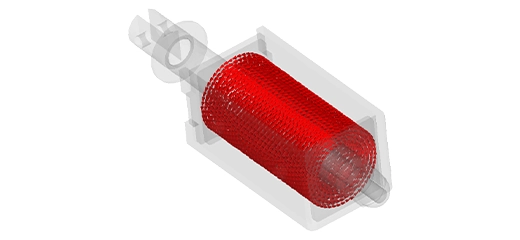Electromagnetic Propulsion
Electromagnetic propulsion, leveraging electric and magnetic field interaction, offers transformative potential for transportation and space exploration, promising high-speed, efficient, and sustainable systems. This technology powers maglev trains and the Hyperloop for terrestrial transit, and plasma thrusters for spacecraft, posing an eco-friendly alternative to chemical propellants. Despite challenges, its development could revolutionize our mobility and space ventures.
Figure 1. Maglev Monorail Hyperloop [
1]
Coil guns
Electromagnetic propulsion, utilizing electric and magnetic field interactions, enables object acceleration without traditional propellants. Coil guns, or Gauss guns, exemplify this by using electromagnetic coils to propel projectiles rapidly. These devices, which can be powered by various electrical sources, offer potential in transportation and experimental applications, despite current limitations.
Fig 2. Typical Schematic of a Coil Gun [
2]
Fig 3. Multi-Stage Coil Gun [
3]
Eddy current in coil guns
In a coil gun, the changing magnetic field generated by the coils induces eddy currents in the projectile. These eddy currents, in turn, generate their own magnetic fields that interact with the magnetic field generated by the coils. The interaction between these magnetic fields creates a force that propels the projectile forward. The magnitude of the eddy currents induced in the projectile depends on the strength of the magnetic field generated by the coils, the speed at which the projectile is moving, and the properties of the projectile material. By controlling the timing and strength of the magnetic field generated by the coils, the eddy currents induced in the projectile can be optimized for maximum acceleration. Eddy currents can also be a source of energy loss in a coil gun, as they generate heat as they flow through the conductor. This can lead to inefficiencies in the system and limit the maximum velocity that can be achieved by the projectile.

Fig 4. Single-Stage Coil Gun [
4]
Streamlining Coil Gun Design with Electromagnetic Simulation
Electromagnetic simulation tools, notably EMWorks, empower the design and optimization of coil guns by modeling electromagnetic field behaviors. These simulations allow for testing various coil configurations and materials without physical prototypes, enhancing efficiency and performance. Additionally, EMWorks' capabilities include eddy current predictions and environmental effect analyses, ensuring accurate projectile behavior predictions and optimizing coil gun design.
Fig 5. 3D Model of a Coil Gun [5]
A simplified schematic of the analyzed actuator with the power system is shown in the graph below. EMS comes with an embedded circuit simulator to help couple the physics and circuits level of an electric device. Figure 7 shows a typical power system of a coil gun system connected to the equivalent inductance of the coil. This circuit is built using EMS circuit editor.
Fig 6. Main Parameters of a Single-Stage Eddy Current Coil Gun
Fig 7. A Coil Gun Power System Created by EMS Circuit Simulator
The coil current computed by EMS during capacitor discharge is shown in Figure 8, while the Lorentz force calculated on the moving projectile is illustrated in Figure 9. The current and the force curves reach peaks around 15kA and 95kN, respectively.
Fig 8. The Current in the Coil During the Capacitor Discharging
Fig 9. The Generated Lorentz Force in the Projectile
Figure 10 displays the computed displacement, speed, and acceleration of the projectile. It can be observed that the projectile attains a speed of 80m/s and an acceleration of 260e3 m/s^2, highlighting the significant advantage of the high speed offered by this application.
(a)
(b)
(c)
Fig 10. Projectile Motion Data, a) Traveled Distance, b) Speed, c) Acceleration
The figures below show the magnetic flux results in 3D plots, which are obtained 0.5ms after the initiation of the capacitor discharge. The results show that the magnetic flux reaches approximately 12T, owing to the high current employed in the system.
Fig 11. Magnetic Flux Distribution in the Coil Gun Device
Animation vs time of the 3D plots of the magnetic flux and the induced eddy current are demonstrated in the figures below.
(a)
(b)
(c)
Fig 12. Animations of Different Fields Results, a) Magnetic Flux (Fringe Plot), b) Magnetic Flux (Vector Plot), c) Induced Eddy Current
Electromagnetic propulsion is a technology that uses magnetic fields to generate propulsive force, with coil guns being a popular example. Electromagnetic simulation tools, such as those provided by EMWorks, can be used to design and optimize coil guns by predicting the behavior of magnetic fields and optimizing coil geometry, current pulse, and projectile shape. This approach can improve the performance of coil guns, making them more efficient, powerful, and reliable. Electromagnetic propulsion and coil guns have many exciting applications across various fields, including transportation, defense, and research.
References
[5] Finite Element Modelling of Magnetic Compression Using Coupled Electromagnetic-Structural Codes. G.Hainsworth, P.J.Leonard and D.Rodger , University of Bath, Bath BA2 7AY, UK.



